Over one million acres of Amazonian forests protected
This past October 18th, 2024 the Bosque Escondido de Ingavi municipal protected area was established which safeguards 1,132,127 acres (458,155 hectares) of Amazonian forests, representing 84.5% of Ingavi’s municipal territory. Its area encompasses both terra firma forests (tropical forest that does not get seasonally flooded) and flood forests, giving a high ecological value to the area and turning it into a refuge for flora and fauna. In addition, it is considered by communities as a key pillar for the local economy and a source of vital sustenance. The creation of the Bosque Escondido de Ingavi municipal protected area also contributes to reducing the effects of climate change, preventing fires and conserving rivers and aquatic species. Within its limits flow important rivers such as the Orthon, Manu, Abuná and Río Negro, which play an important role in the water cycle and the ecological balance of the region and guarantee a sustainable future for the communities and the next generations, based on balanced coexistence with nature.

Ecological connectivity
The Bosque Escondido de Ingavi municipal protected area is the largest subnational protected area in Pando, and helps to solidify a vast complex of protected areas across the department. Pando is notable for the immense amount of standing forest contained within its department, where from the view of a satellite one can see that where the forest stops is where the border with Brazil begins. The Bosque Escondido de Ingavi municipal protected area is adjacent to the recently established Tahuamanu – Orthon departmental conservation area and lies north of the Lagos de San Pedro municipal protected area, both established with Andes Amazon Fund’s financial contributions. Meanwhile west of Bosque Escondido de Ingavi are the Santa Rosa and Puerto Rico municipal protected areas.
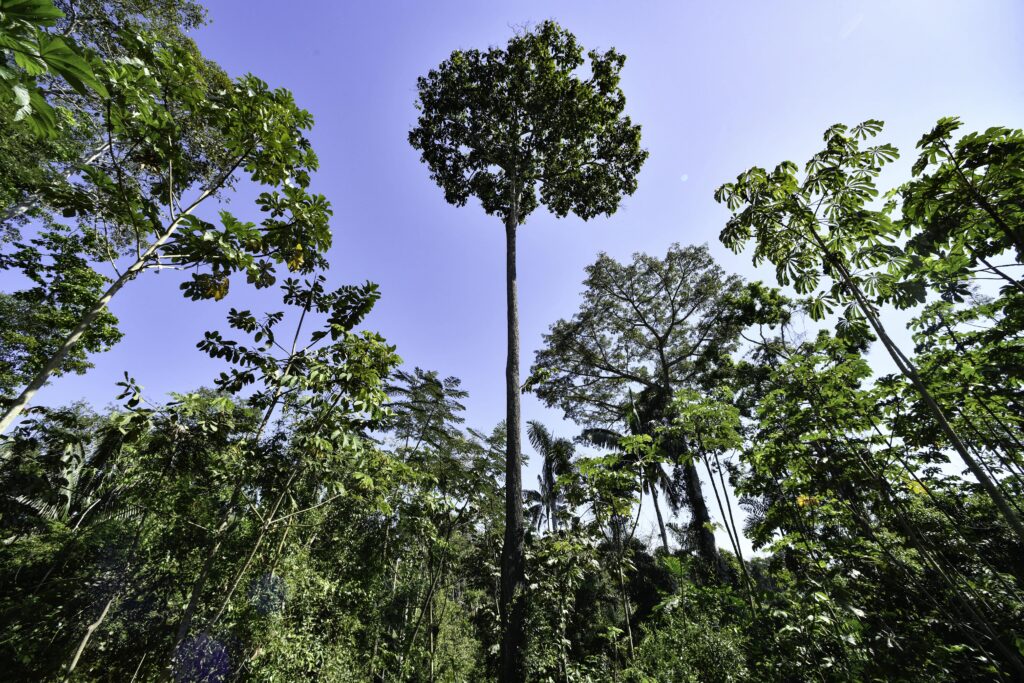
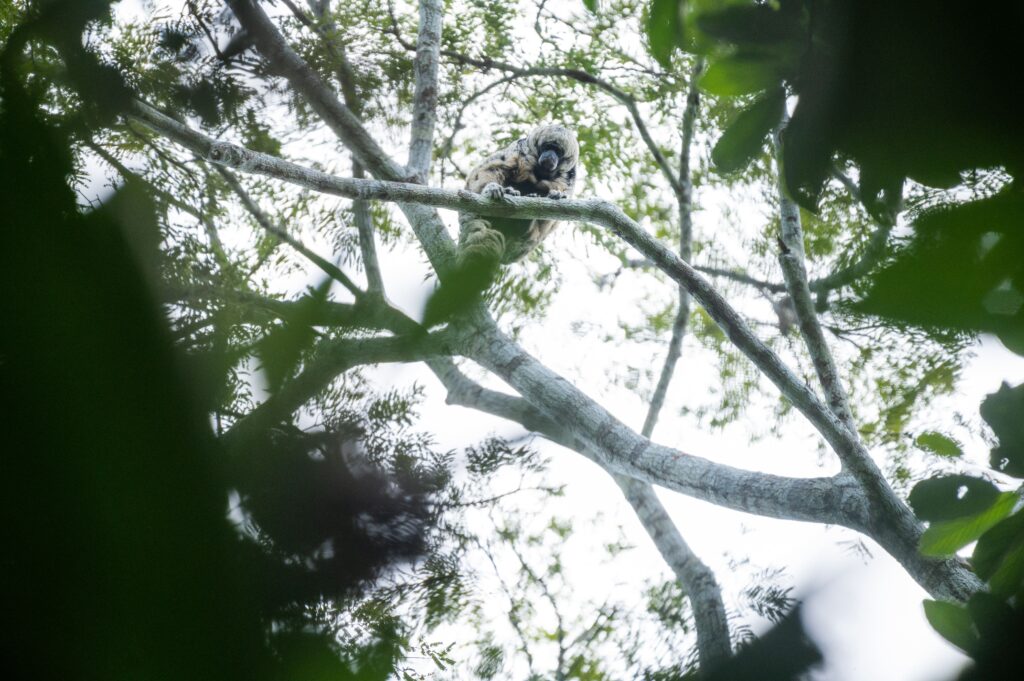
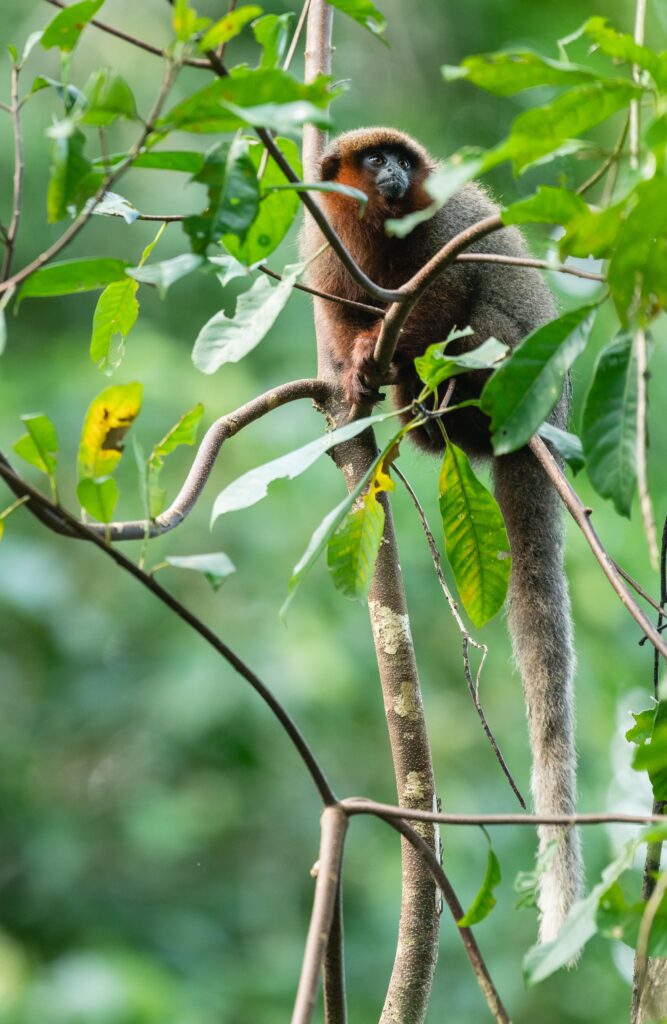
Despite the lack of recent studies in the municipality of Ingavi, extensive wild areas with intact ecosystems and crucial biodiversity remain. It is estimated that with the establishment of the Bosque Escondido de Ingavi Municipal Protected Area 125 species of amphibians, 136 species of reptiles, 202 species of mammals, and 704 species of birds will be conserved. Three of these species, Tomes’s sword-nosed bat (Lonchorhina aurita), the giant Amazonian river otter (Pteronura brasiliensis), and the South American river turtle (Podocnemis expansa) are in danger of extinction while 14 additional species present in the Protected Area are vulnerable according to the International Union for the Conservation of Nature.
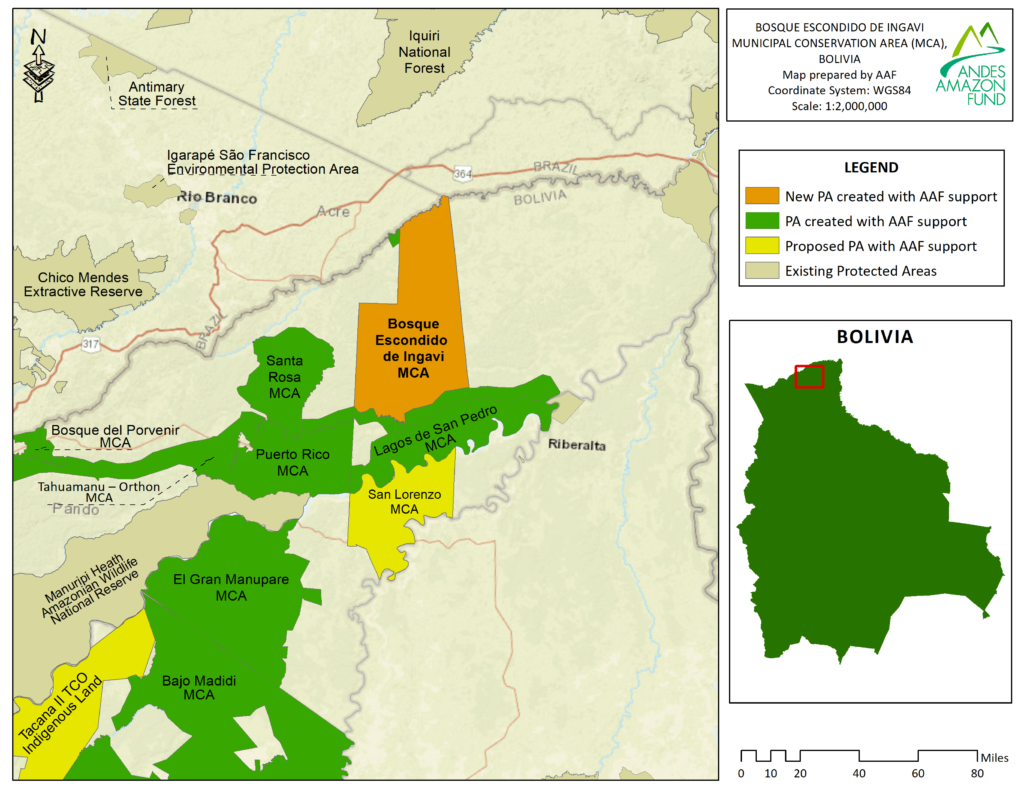
A collaborative establishment effort
The means of accessibility to this area are very limited. Its roads are traveled almost exclusively by its inhabitants and the telephone signal is unstable. Although there are many difficulties for the sustainable development of many communities in the region, there is hope that with the creation of the protected area, opportunities for collaboration will be established to generate a stable income with the potential of growth within the communities. According to current data from the National Institute of Agrarian Reform of Bolivia (INRA), a total of 15 legally titled rural communities and three private properties have been identified within the limits of the municipal protected area, of which one is an indigenous community.
The majority of Ingavi’s communities depend on non-timber forest products (NTFP’s) for their income, so the municipal protected area’s establishment will serve as a crucial source for local community development. Among the fruits and resins harvested from the forests in the protected area, Brazil nut is the most widely harvested with 300 families dependent on collecting the nut. The “20 de Noviembre” community, based in the protected area, seeks to protect natural areas and generate economic income for its inhabitants through the sustainable use of açaí fruits (Euterpe prayer), mingucha (Oenocarpus bataua), royal palm (Mauritia flexuosa), moriche (Mauritia flexuosa) and Brazil nuts (Bertholletia talla). The creation of this area is based on a participatory model of conservation, where maintaining continuous forest is in the long term economic interests of the communities that depend on it.
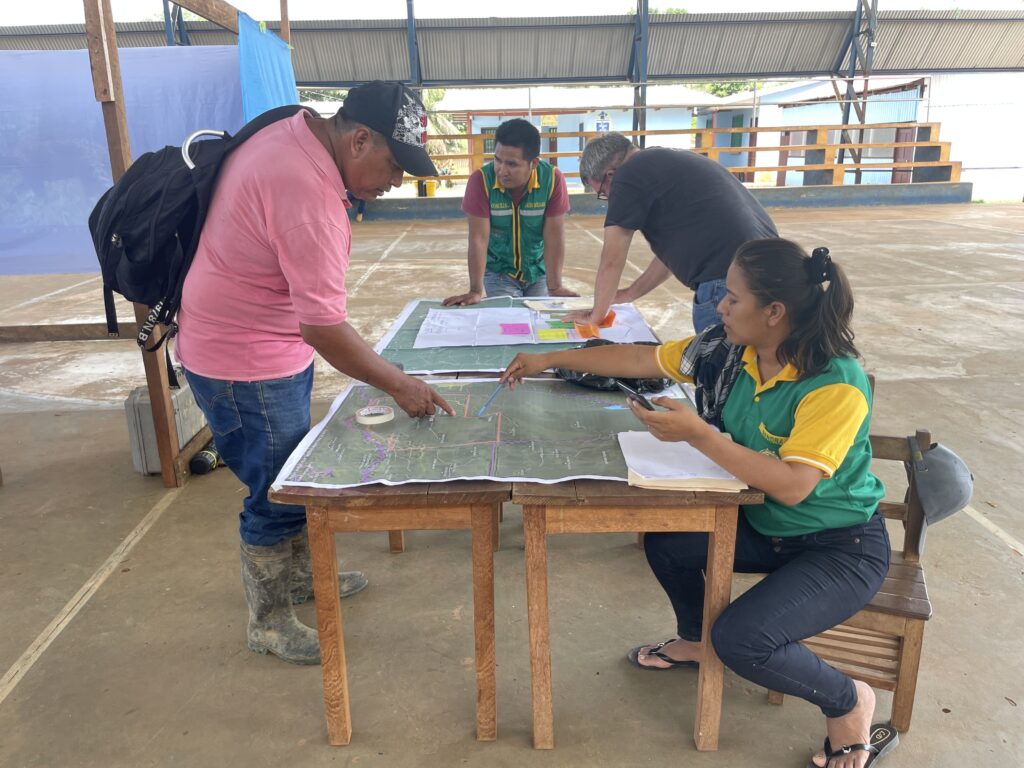
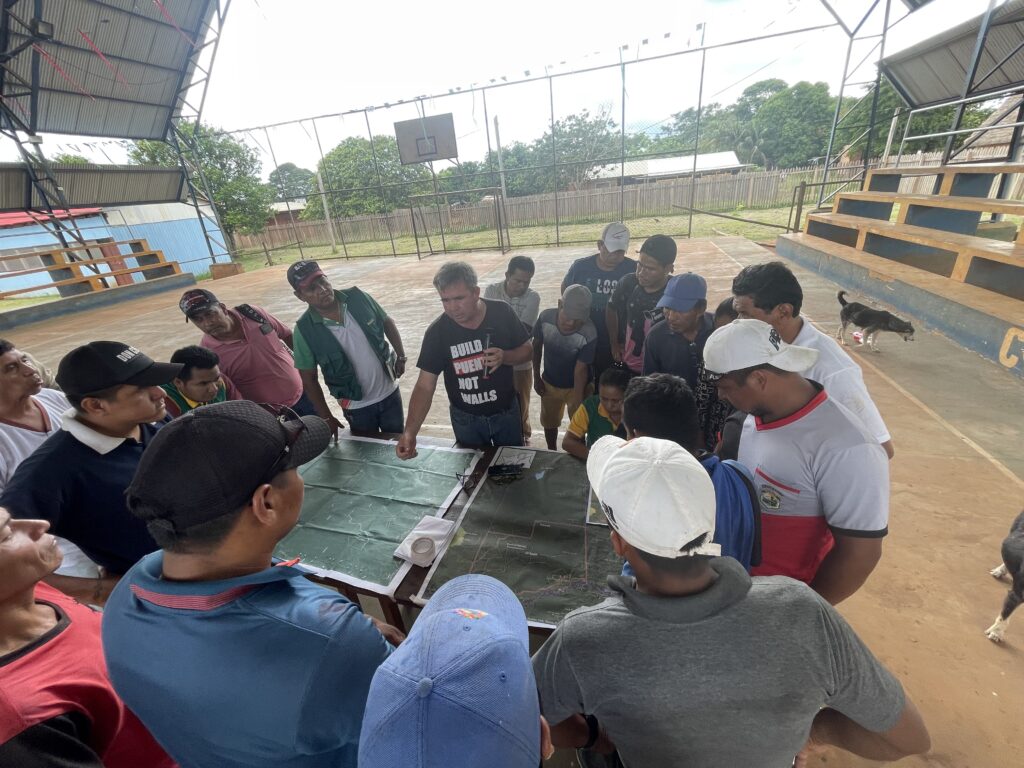
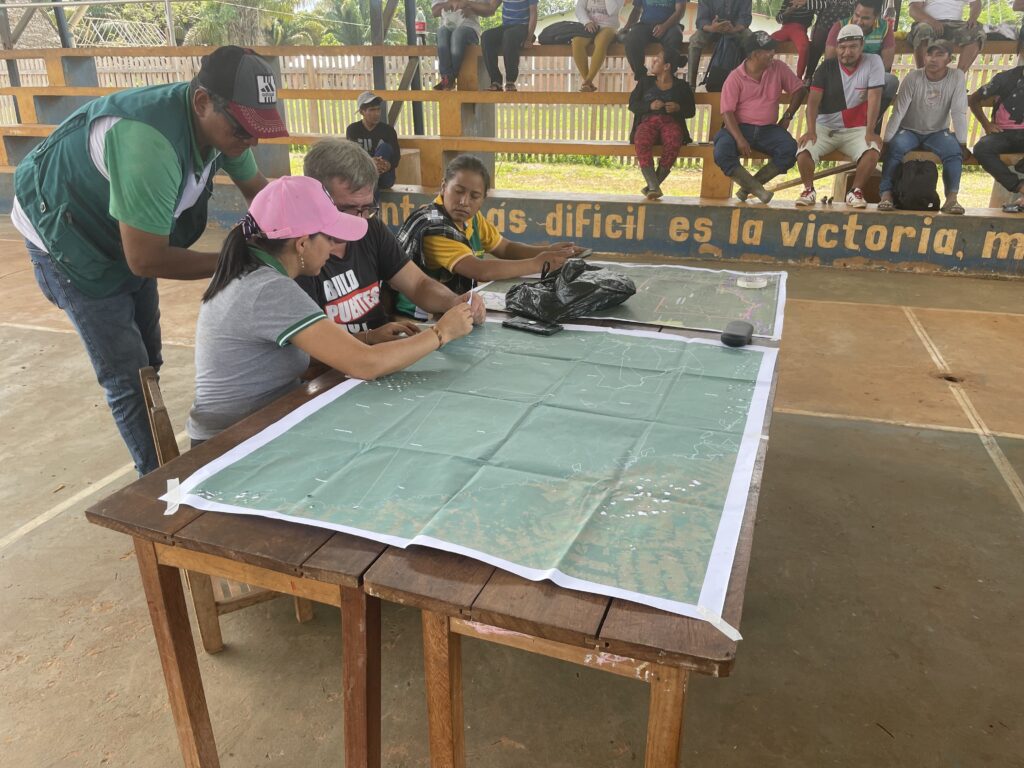
The establishment of the municipal protected area is in part the result of more than a year of dedication and work between local communities and Conservación Amazónica – ACEAA through activities and consultation which, through a collaborative process, promoted exchanges whereby conservation priorities for the area were defined to contribute to the conservation of the invaluable cultural and environmental heritage of Ingavi’s forest, in accordance with the needs of its inhabitants. At the same time, the Ingavi municipality’s desire to put the vast majority of its territory under protection demonstrates the value that it sees in leaving its forests standing.
Acknowledgements:
The establishment of the Bosque Escondido de Ingavi municipal protected area was made possible by the municipal government of Ingavi and the local communities. Technical support for the establishment was provided by Conservación Amazónica – ACEEA with the financial support of the Andes Amazon Fund, Art into Acres and Rainforest Trust.
MAKE AN IMPACT
Learn how we can make an impact in our world together. Donate or get involved by subscribing to our email list:
